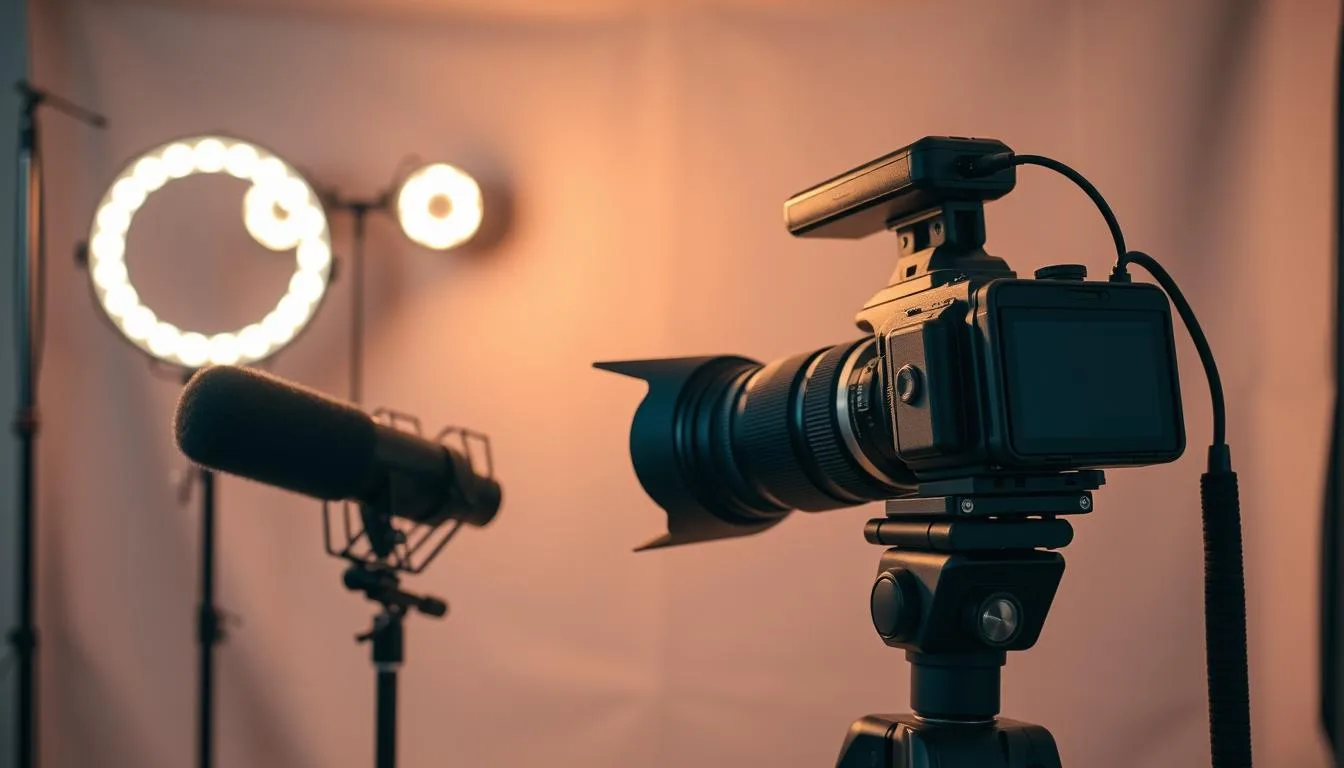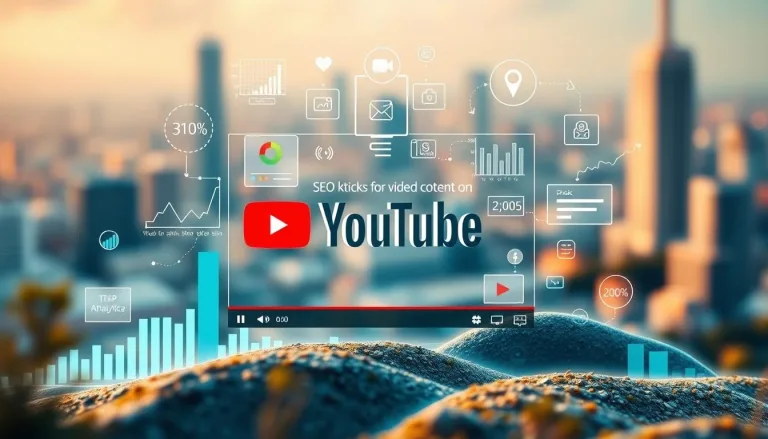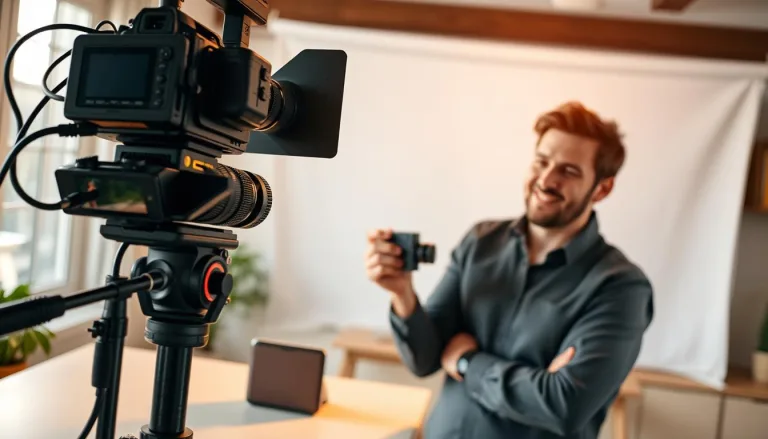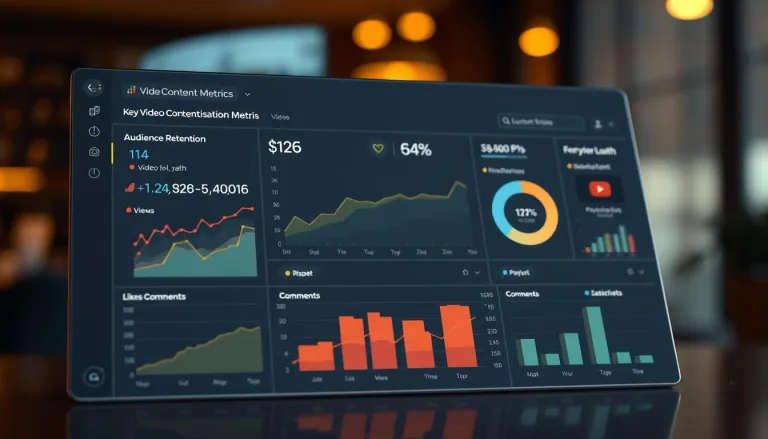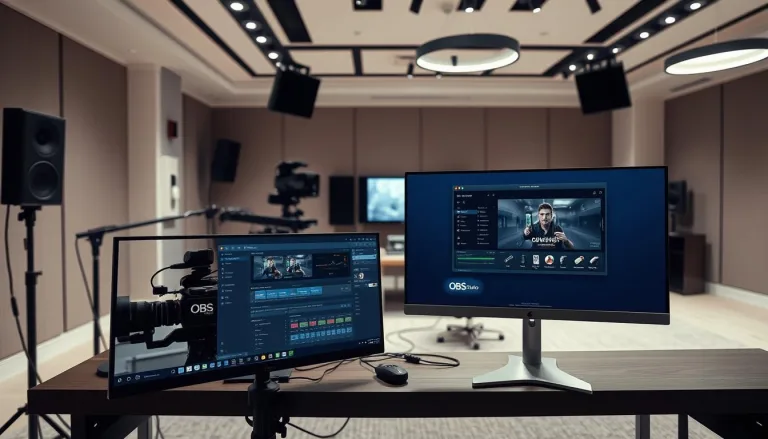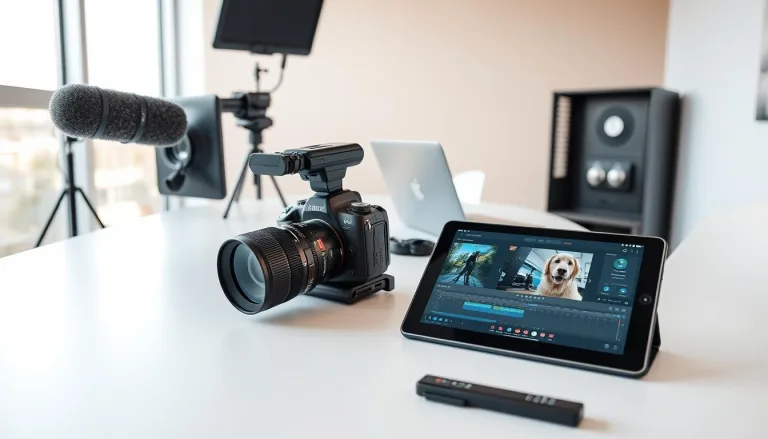Tips for Shooting High-Quality Videos at Home
Video content creation has changed how we communicate online. It gives people and businesses great ways to connect with their audience. Now, anyone can make professional videos from their own home.
Creating videos at home is easier than ever, without needing a fancy studio. With some planning and basic skills, anyone can share their stories through video.
This guide will show you how to make great videos at home. You’ll learn about choosing the right camera, setting up good lighting, improving audio, and editing like a pro. These tips will help you improve your video-making skills.
Creating successful videos means knowing how to tell a story with pictures and sound. You’ll learn to turn your home into a professional studio. This way, you can make the most of your creativity without spending a lot of money.
Whether you’re making videos for yourself, teaching others, or promoting your business, learning to make videos at home is key. It opens up many ways to connect with people online and engage your audience.
Essential Equipment for Home Video Production
Creating top-notch multimedia content at home needs the right tools. Whether you’re new or experienced, picking the right gear makes a big difference. It’s all about finding what fits your needs and budget.
When choosing cameras for your home studio, you have many options. Each camera type offers its own benefits for making videos.
Camera Selection Strategies
- Smartphones: Budget-friendly with excellent video quality
- DSLR Cameras: Professional-grade versatility
- Mirrorless Cameras: Compact with high-resolution capabilities
- Dedicated Video Cameras: Specialized recording features
Audio Recording Essentials
Good sound is key to professional video. Get quality audio gear to make your content stand out.
- Lavalier Microphones: Discreet personal audio capture
- Shotgun Microphones: Directional sound recording
- USB Condenser Microphones: Studio-quality audio for voiceovers
Lighting Setup Recommendations
Good lighting turns amateur videos into pros. Look for affordable lighting that boosts your video’s look.
- Ring Lights: Soft, even illumination
- LED Panel Lights: Adjustable brightness and color temperature
- Three-Point Lighting: Professional studio technique
You don’t need to spend a lot to get the right gear. Start with the basics that fit your goals. Then, add more as you get better.
Creating the Perfect Home Studio Setup
Creating a great home studio for web video takes planning and organization. The right space can make your videos look professional.
When picking a studio spot, focus on these important things:
- Minimal background noise
- Consistent natural light
- Adequate room for equipment
- Potential for multiple camera angles
Look for a quiet room in your home for your studio. Bedrooms, home offices, or spare rooms are good choices. Make sure it’s clean and has a professional look to improve your video’s appeal.
Key things to think about for your studio include:
- Sound treatment to minimize echoes
- Neutral wall colors that don’t distract viewers
- Flexible lighting options
- Compact, multipurpose equipment
Get portable sound-absorbing panels to better your audio. These panels are light and can greatly improve sound quality without big changes to your space.
With careful planning, your home studio will be perfect for making top-notch web videos. Your videos will grab viewers’ attention and show off your skills.
Mastering Lighting Techniques for Professional Results
Digital video creation depends a lot on good lighting. Professional videographers know that the right light can make a video look amazing. Good lighting makes your content clear and engaging, helping it stand out.
Lighting is key for adding depth, mood, and interest to your videos. Whether you’re new or experienced, learning about lighting can boost your skills in video making.
Natural vs Artificial Lighting
Creators have two main lighting choices for making videos:
- Natural Light: Soft, flattering, and free
- Artificial Light: Consistent, controllable, and precise
Natural light is best near windows during the day. Artificial lighting gives more consistent results, perfect for indoor projects.
Three-Point Lighting Setup
The three-point lighting method is key for professional editing:
- Key Light: Primary light source
- Fill Light: Reduces shadows
- Back Light: Creates depth and separation
Managing Shadows and Contrast
Good lighting means knowing how light affects your subject. Soft diffusers can soften harsh shadows. Strategic light placement adds depth to your videos.
Try different light angles and strengths to match your video style.
Video Content Creation: Best Practices and Strategies

Creating great video content is more than just filming. It’s about having a solid plan to reach your audience and meet your marketing goals.
Effective video content creation involves several key steps:
- Understanding your target audience’s preferences and needs
- Crafting compelling narratives that resonate with viewers
- Maintaining consistent brand messaging across all video content
- Creating clear and engaging calls-to-action
Developing a video content strategy means focusing on a few important areas. Audience research is the base of good video content. It helps you know what your viewers like and expect.
Storytelling is vital in video content. It makes viewers feel something, learn something, or get a solution to a problem. By planning your content and sticking to a schedule, you build excitement and loyalty with your audience.
It’s also key to measure how well your content does. Look at things like how many people watch, how engaged they are, and if it leads to sales. This helps you make your videos better and more appealing to your audience.
Advanced Camera Techniques and Framing
Professional visual storytelling is more than just recording with a camera. It’s about mastering advanced techniques to make videos that grab your attention.
Creating great video content needs careful planning and skill. Photographers and videographers use special techniques to make their videos stand out.
Rule of Thirds Application
The rule of thirds is key for better composition. It divides the frame into a 3×3 grid. Placing important elements on these lines or at their points makes shots more dynamic.
- Divide the frame into nine equal sections
- Place important subjects at grid intersections
- Create visual balance and interest
Camera Angles and Movement
Choosing the right camera angle can change how a video feels. Moving the camera can also guide the viewer’s attention and improve the story.
| Camera Angle | Emotional Impact | Best Used For |
|---|---|---|
| Low Angle | Powerful, Intimidating | Emphasizing subject importance |
| High Angle | Vulnerable, Diminished | Showing weakness or perspective |
| Eye Level | Neutral, Conversational | Interviews, direct communication |
Composition Guidelines
Good composition makes videos memorable. Leading lines, symmetry, and depth of field are key. They help viewers understand and feel the story.
- Use natural lines to direct attention
- Create depth through foreground and background elements
- Experiment with symmetrical and asymmetrical compositions
Using these advanced techniques, creators can make their videos more engaging and professional.
Optimizing Audio Quality for Home Videos

Professional multimedia content production relies on top-notch audio quality. Poor sound can ruin the viewing experience, even if the video is okay. So, creators should focus on making the audio clear.
Choosing the right microphone is key for home video production. Different types are best for different needs:
- Lavalier microphones: Great for interviews and presentations
- Shotgun microphones: Best for capturing sound with little background noise
- USB microphones: Easy for recording straight to your computer
Where you place the microphone greatly affects the sound quality. Experts say to put it close to the sound source and away from distractions. This helps cut down on background noise that can pull viewers away.
Keeping background noise down is essential in home videos. Here are some easy ways to improve your audio:
- Use sound-absorbing materials like blankets or acoustic panels
- Record in quiet rooms to avoid outside noise
- Use editing tools to reduce background noise
It’s important to listen to your audio while recording. Wearing headphones lets you catch sound problems right away. This way, you can fix them before they ruin your video.
Post-Production and Editing Fundamentals
Video editing turns raw footage into stories that grab your attention. It’s all about making content look professional. Knowing the basics of video editing can make a big difference in your work.
Choosing the right video editing software is key to making great content. Each tool is designed for different levels of skill and projects.
Video Editing Software Options
- Professional-grade software: Adobe Premiere Pro, Final Cut Pro X
- Intermediate options: DaVinci Resolve, Vegas Pro
- Beginner-friendly tools: iMovie, Windows Movie Maker
Basic Editing Techniques
Learning basic video editing skills is essential for creating engaging stories. Key techniques include:
- Trimming and cutting clips
- Arranging sequence of shots
- Adding smooth transitions
- Incorporating text and graphics
Color Correction and Grading
Changing colors can change how a video feels. Professionals use advanced techniques to make videos more impactful.
| Technique | Purpose | Impact |
|---|---|---|
| Color Correction | Balance exposure and color | Consistent visual quality |
| Color Grading | Create artistic style | Emotional atmosphere |
Getting good at video editing takes time and effort. Keep learning and trying new things to find your own style in web video development.
Conclusion
Creating top-notch videos at home is key in today’s video marketing world. By using pro techniques and smart strategies, anyone can turn their home into a great place for making videos. The first step is to learn about the basics of equipment, lighting, and technical skills.
Doing well in video production means practicing a lot and trying new things. Experts see each video as a chance to get better and tell stories in new ways. With hard work and learning, even beginners can make videos that grab people’s attention.
Thanks to technology, making videos is easier and cheaper than ever. This opens up big chances for brands and people to share their messages. By following the tips in this guide, creators can make videos that really connect with their audience.
The world of digital video is always changing, so it’s important to keep learning. Knowing about new tech, editing tricks, and what people like helps keep your videos interesting. This makes making videos a fun and exciting adventure.

